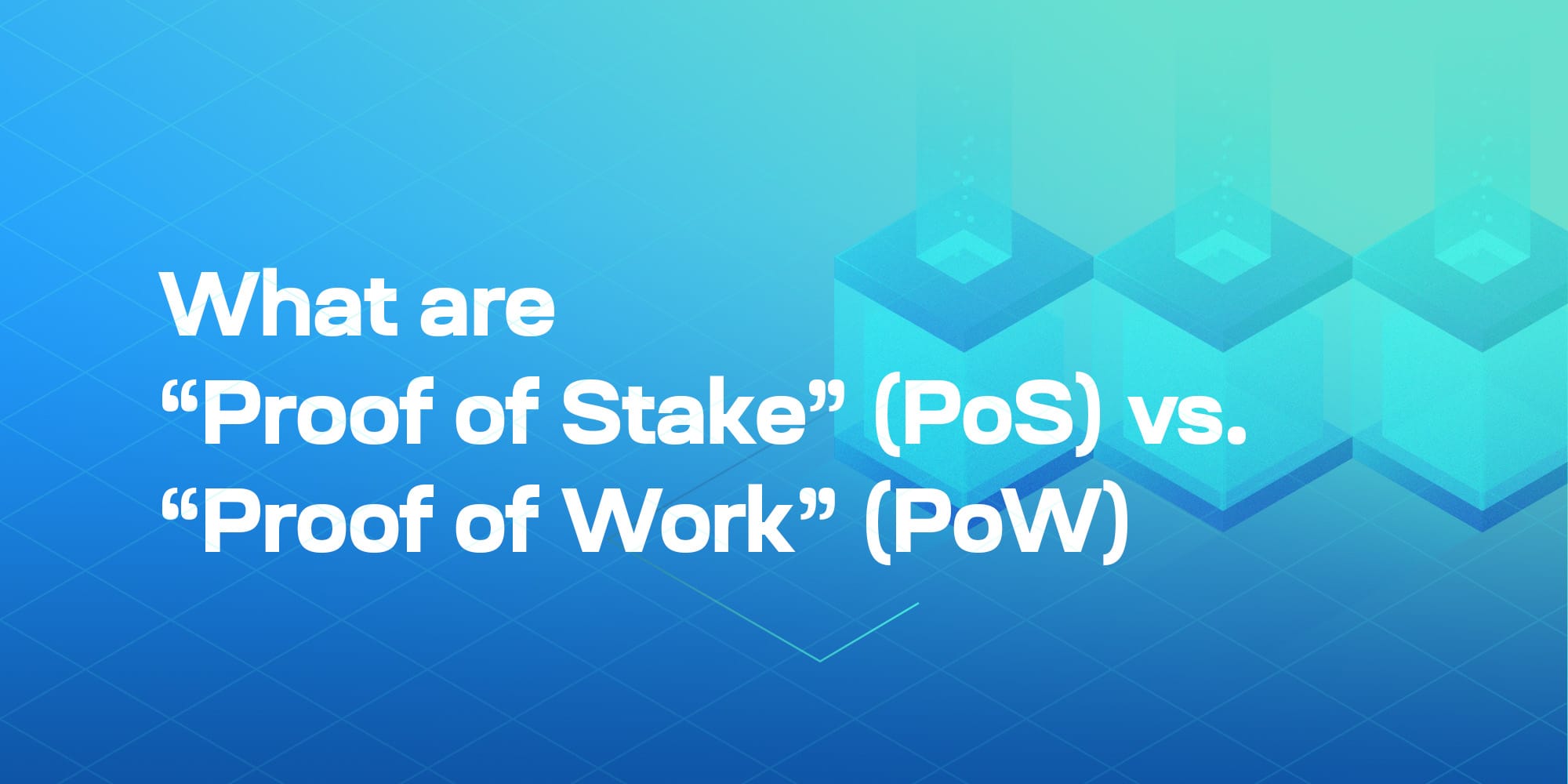Consensus Mechanisms of Blockchains: What are “Proof of Stake” (PoS) vs. “Proof of Work” (PoW)?

In the world of cryptocurrencies, there are two main validating algorithms (mainly known as consensus mechanisms) that allow blockchains to function safely called Proof of State (PoS) and Proof of Work (PoW).

Consensus mechanisms constitute the foundation of all cryptocurrency blockchains and make them safe. In this matter, two main consensus mechanisms allow blockchains to function safely called Proof of State (PoS) and Proof of Work (PoW). The cryptocurrencies implement these consensus mechanisms to verify new transactions and add them to blockchains to create new tokens.
Proof of work is the oldest system of the two, preferred by Bitcoin, Ethereum 1.0, and many others. Proof of stake, on the other hand, is a much more contemporary algorithm that manages Ethereum 2.0, Cardano, Tezos and other (rather newer) cryptocurrencies in general. This article will define these two consensus mechanisms and explain the differences.

What is Proof of Work (PoW)?
Proof of Work (PoW) is a consensus algorithm for blockchain networks. Especially, Bitcoin is the cryptocurrency that pioneered the use of PoW.
In technical terms, electrical energy is converted into digital blockchain “weight” in the PoW algorithm, providing an unforgivable value to PoW-using blockchains like Bitcoin. In doing so, it uses an incentive structure that produces a Byzantine fault tolerant (BFT) distributed network. Generally referred to as mining, the proof of work is considered the digital equivalent of the real-world process of mining precious metals from the earth. Digital miners across the world compete with each other to be the first to solve the puzzle. In this way, PoW blockchains are protected and validated. The reward of the winner is to update the blockchain with the recently verified transactions presented by the network with a predetermined amount of crypto.
What is Proof of Stake (PoS)?
Proof of Stake (PoS) is a type of algorithm verification we hear more and more with the widespread use of cryptocurrency. According to this method, the sharing of transfer costs is determined not by who has more processing power, but according to some wallets having more of that coin/token. In other words, coin holders get coins in proportion to their amount in this algorithm. This process is called staking. In order to be able to staking, the person must keep the account with the coin open (unlocked) and online. Every online user does block verification automatically and there is no need for a supercomputer, it is enough to have some coins in their account.
Reportedly, since this type of consensus algorithm is more effective, faster and less resource intensive, the Ethereum network decided to upgrade its blockchain, Ethereum 2.0, by employing the PoS and abandoning the method of proof of work. The next section will point out the differences between these consensus mechanisms.

Differences between PoS vs. PoW
- Proof of stake is more energy efficient than proof of work technology. In the PoS system, miners trade the number of coins they own and earn that amount of reward. In this system, miners are given as much work as they have and energy, labor and time are saved while in the PoW system, miners solve their mixed transactions with computers or the devices they use for the solution of transfer transactions, causing high processing power, labor and high energy consumption.
- The Proof of Stake system is more advantageous in terms of security. It is more resistant to attacks because the balance and transactions are scattered against 51% of attacks that can be made on crypto money networks.
- The low cost of proof of stake is what makes cryptocurrencies conduct transactions quickly.
- Proof of stake requires a very large initial investment compared to the proof of work algorithm. Depending on the size of the network, enough number of the cryptocurrency's native token must be purchased to be qualified as a validator. This problem could deteriorate with the rise of cryptocurrencies in market cap.
Each system has upside downs based on how they are processed and what they achieve at the end in the cryptocurrency world. The result will change according to your needs and expectations and both of these major consensus mechanisms will serve in that matter for a long period of time.
